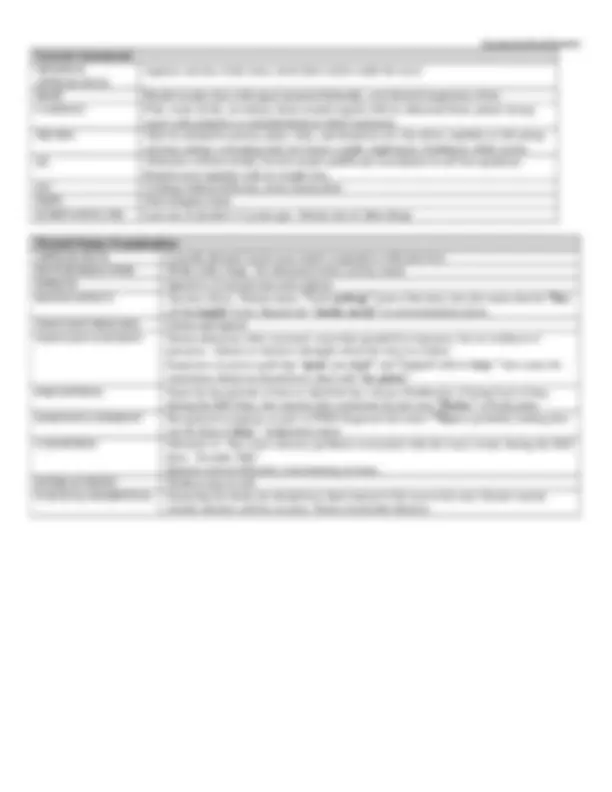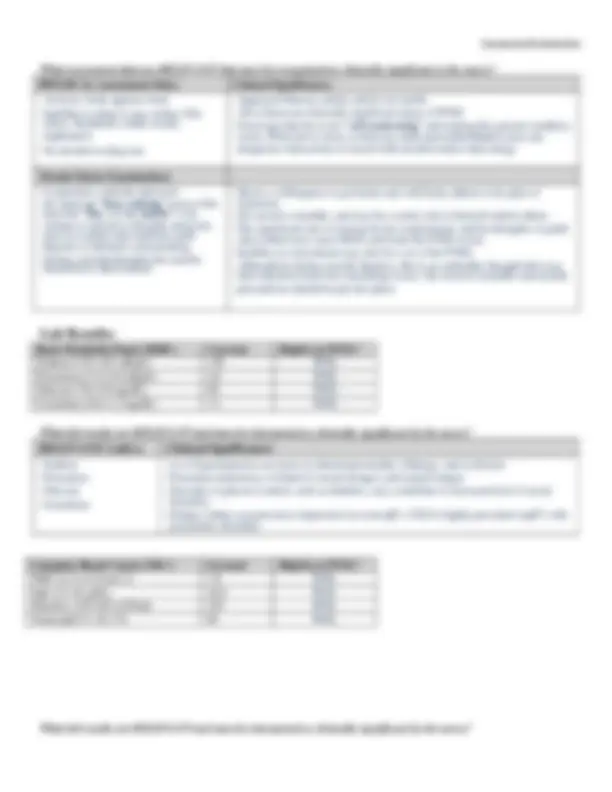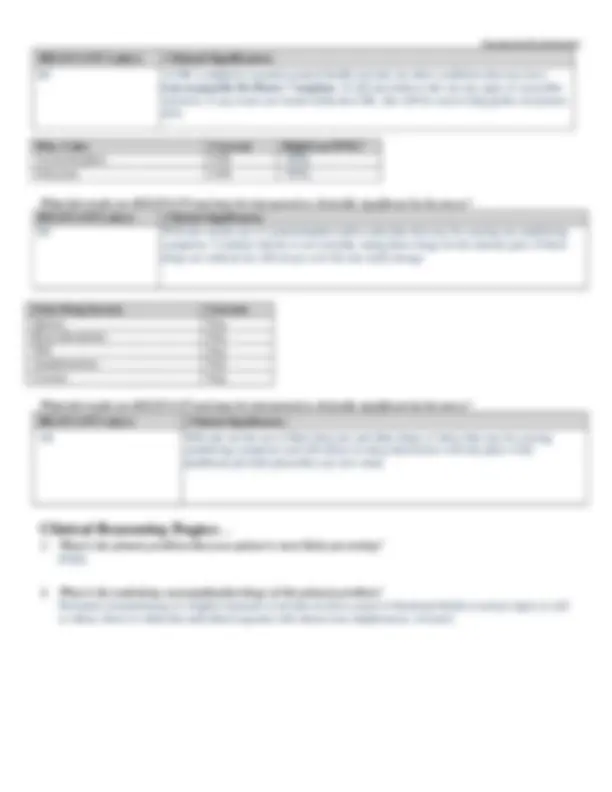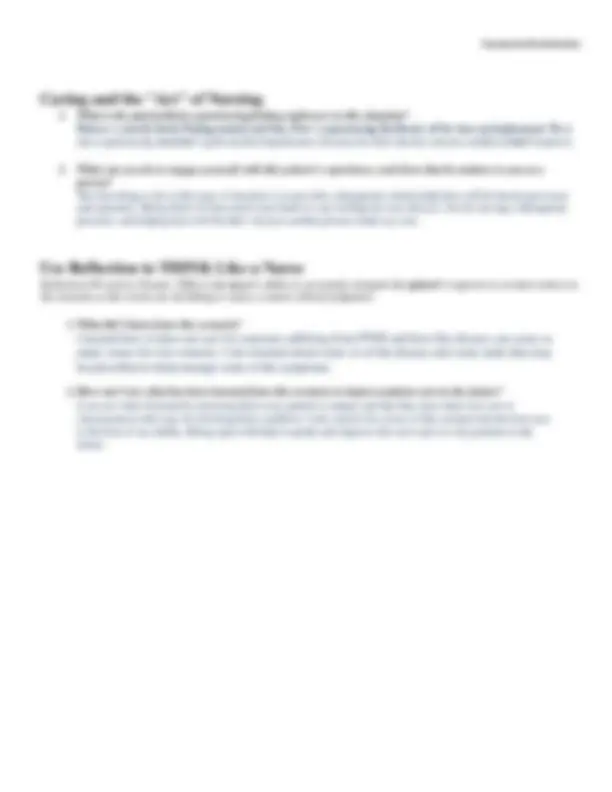






Study with the several resources on Docsity

Earn points by helping other students or get them with a premium plan


Prepare for your exams
Study with the several resources on Docsity

Earn points to download
Earn points by helping other students or get them with a premium plan
Community
Ask the community for help and clear up your study doubts
Discover the best universities in your country according to Docsity users
Free resources
Download our free guides on studying techniques, anxiety management strategies, and thesis advice from Docsity tutors
A case study of a 34-year-old African American male veteran who has been experiencing symptoms of posttraumatic stress disorder (PTSD) after serving four combat tours of duty in Iraq and Afghanistan. relevant data from the patient's history, social history, and vital signs, as well as lab results and medical management orders. The document also includes a list of interrelated concepts and collaborative care measures for managing PTSD in veterans.
Typology: Exams
1 / 8

This page cannot be seen from the preview
Don't miss anything!





Primary Concept Mood and Affect Interrelated Concepts (In order of emphasis)
History of Present Problem: Marcus Jackson is a 34-year-old African American male who served four combat tours of duty in Iraq and Afghanistan. He came to the Veterans Administration (VA) today for an outpatient appointment because he has not slept more than two hours a night for the past week. This is his fourth clinic visit over the past year with the same symptoms: inability to sleep, nightmares, increasing anxiety, and isolation. Every time he falls asleep, he relives the bombing and has flashbacks of bloody body parts that he witnessed after the explosion. He states that he is more aware of noises and any loud noise such as fireworks and or cars backfiring causes him extreme anxiety. His medications for PTSD have not been helping control his anxiety. He has been spending more time in his room watching TV and avoids spending time with his wife and children. Today he told his wife he should have died and not his friends. His primary care provider encouraged voluntary admission and his wife brought Marcus to the emergency department of the closest VA hospital so he can be admitted. Personal/Social History: During his last tour in combat, Marcus’ best friend drove over an IED. The explosion killed everyone in the vehicle. During the blast, Marcus was hit with shrapnel in his left leg, stomach, and left eye. These injuries left him blind in his left eye. He has had multiple surgeries to his abdomen, and six reconstruction surgeries to his leg. He walks with a limp and continues to complain of severe pain in his left leg. He was given a medical discharge from the Marines because of the extensive nature of his injuries and is receiving disability. Marcus is married with three children from six to twelve years of age. He has been married to his wife, Ariel, for fourteen years. While in the service, his family moved six times and endured four combat tours of duty. Each time he returned home from combat, his wife noted that he has no history of physical aggression and has been more agitated and had more trouble sleeping with frequent nightmares. Marcus reports he used to drink “a lot” but decided two years ago that alcohol was making everything worse. Reports he has not had a drink for the past 1 ½ years. Denies other drug use.
What data from the histories are RELEVANT and have clinical significance to the nurse? RELEVANT Data from Present Problem: Clinical Significance:
What VS data are RELEVANT that must be recognized as clinically significant to the nurse? RELEVANT VS Data: Clinical Significance:
What assessment data are RELEVANT that must be recognized as clinically significant to the nurse? PHYSICAL Assessment Data: Clinical Significance:
All A CBC is helpful to monitor general health and rule out other conditions that may have been responsible for Marcus’ symptoms. It will also help to rule out any signs of a possible infection. If any issues are found within the CBC, this will be used to help guide a treatment plan. Misc. Labs: Current: High/Low/WNL? Acetaminophen 0.00 WNL Salicylate 0.00 WNL What lab results are RELEVANT and must be interpreted as clinically significant by the nurse? RELEVANT Lab(s): Clinical Significance: All Will rule out the use of acetaminophen and/or salicylate that may be causing any underlying symptoms. Confirms that he is not currently taking these drugs for his chronic pain. If these drugs are ordered, he will not go over the max daily dosage Urine Drug Screen: Current: Opiates Neg Benzodiazepines Neg THC Neg Amphetamines Neg Cocaine Neg What lab results are RELEVANT and must be interpreted as clinically significant by the nurse? RELEVANT Lab(s): Clinical Significance: All Will rule out his use of illicit drug use and other drugs of abuse that may be causing underlying symptoms and will ensure no drug interactions will take place if the healthcare provider prescribes any new meds Clinical Reasoning Begins…
1. What is the primary problem that your patient is most likely presenting? PTSD 2. What is the underlying cause/pathophysiology of this primary problem? Persistent reexperiencing of a highly traumatic event that involves actual or threatened death or serious injury to self or others; these of which the individual responds with intense fear, helplessness, or horror.
Nursing Interventions: Rationale: Expected Outcome:
Caring and the “Art” of Nursing
1. What is the patient likely experiencing/feeling right now in this situation? Marcus is mostly likely feeling anxiety and fear if he’s experiencing flashbacks of his time on deployment. He is also experiencing survivor’s guilt and the hopelessness because he feels that his current condition won’t improve. 2. What can you do to engage yourself with this patient’s experience, and show that he matters to you as a person? The best thing to do in this type of situation is to provide a therapeutic relationship that will be based upon trust and openness. Being there for him and to just listen to any feelings he may discuss. Just by having a therapeutic presence and helping him feel like he’s not just another person under my care. Use Reflection to THINK Like a Nurse Reflection-IN-action (Tanner, 2006) is the nurse’s ability to accurately interpret the patient’s response to an intervention in the moment as the events are unfolding to make a correct clinical judgment. 1. What did I learn from this scenario?
2. How can I use what has been learned from this scenario to improve patient care in the future? I can use what I learned by knowing that every patient is unique and that they have their own set of circumstances that may be affecting their condition. I also need to be aware of this and provide the best care to the best of my ability. Being open will help to guide and improve the care I give to my patients in the future.